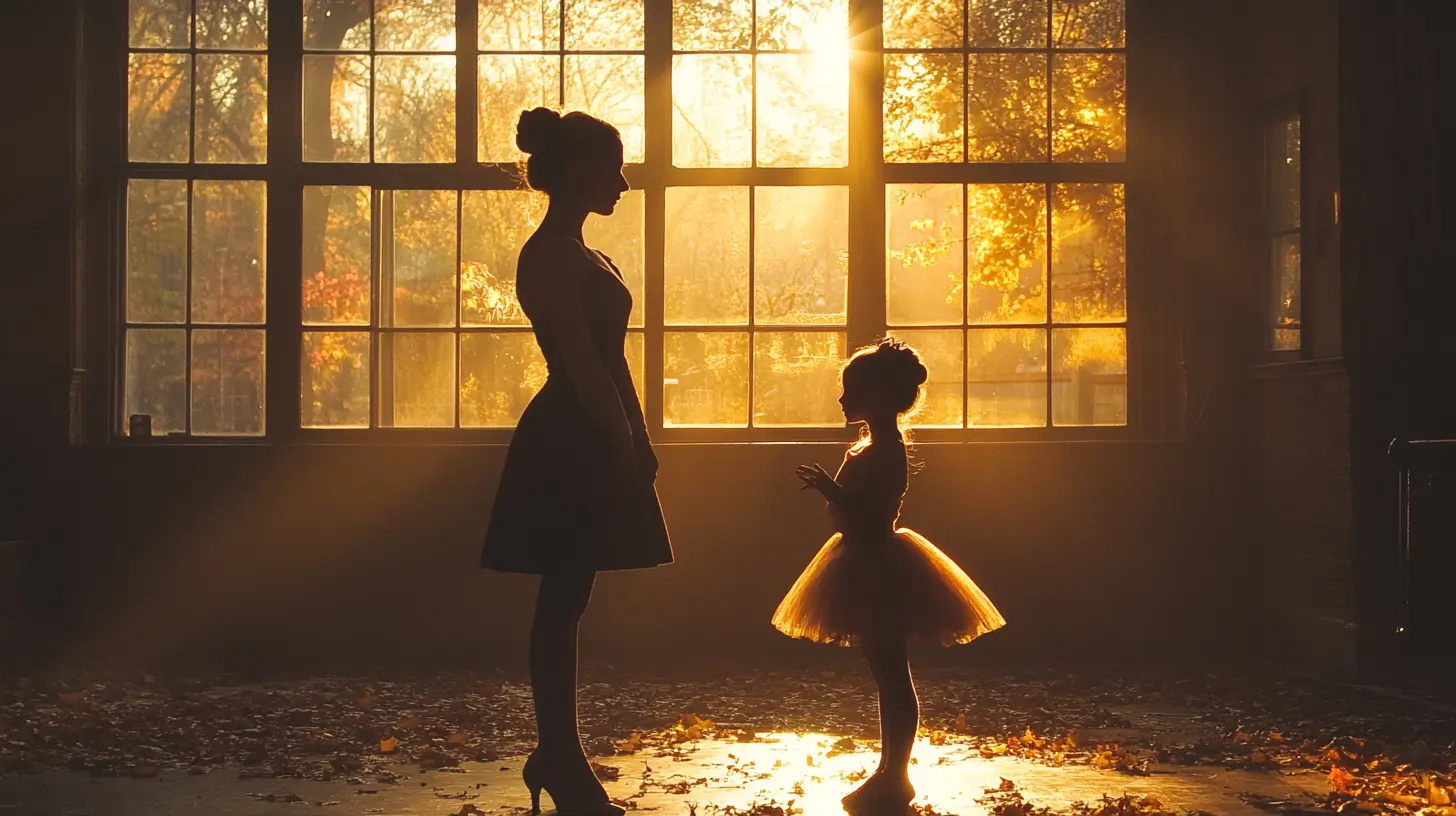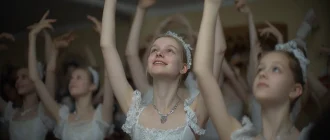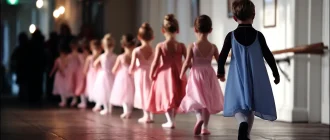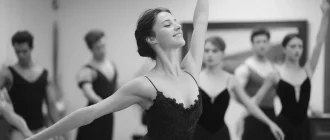Choosing a teacher for a ballerina is key to your child’s growth in dance. This guide covers selecting a teacher to teach dance for a ballerina, focusing on needs, job qualifications, and school research.
Graceful Insights
- Identify your child’s dance goals and needs to find a compatible teacher and school.
- Observe classes and seek recommendations to evaluate teachers’ methods and qualifications effectively.
- Consider class size and communication skills, as they greatly impact your child’s learning experience and development.
Teacher for a Ballerina Podcast
| Criteria | Details | Why It Matters |
|---|---|---|
| Experience & Credentials | Look for formal training, professional performance experience, or teaching certifications (e.g., RAD, Vaganova). | Ensures the teacher has a solid foundation in ballet and understands professional standards. |
| Teaching Style | Evaluate if the teacher balances discipline with encouragement and adapts their methods to students’ needs. | A supportive style fosters confidence and a positive learning environment for young dancers. |
| Technical Knowledge | Assess their ability to correctly teach fundamental techniques like turnout, alignment, and footwork. | Proper technique prevents injury and builds a strong foundation for advanced skills. |
| Class Structure | Observe if the classes are well-organized with a clear progression from barre to center work. | A structured class helps dancers develop systematically and effectively. |
| Student Feedback & Success Stories | Check reviews and testimonials, or speak to former students who have progressed under their guidance. | Indicates the teacher’s ability to inspire and produce skilled dancers. |
| Adaptability | Ensure they can teach dancers of varying skill levels and provide personalized attention when needed. | Promotes individualized growth and addresses specific areas for improvement. |
| Professional Connections | Teachers affiliated with reputable schools, companies, or competitions can offer performance opportunities. | Opens doors for future auditions, scholarships, and professional networking. |
| Class Size | Smaller classes allow more individual attention, while larger classes foster group dynamics. | It impacts the level of personalized feedback and interaction a student receives. |
| Personality Fit | Consider how well the student connects with the teacher on a personal level. | A positive relationship can boost motivation and commitment to learning. |
| Location & Schedule | Ensure the studio is conveniently located, with classes that fit into the student’s routine. | Practical considerations like travel time and availability ensure consistent attendance. |
Understand Your Child’s Needs
The first step is to understand your child’s needs and aspirations. Assess their skill level, interests, and goals to ensure compatibility with potential dance teachers. Please encourage your child to share their dance goals with you and their teachers, which will help you provide the necessary support.
Celebrating their strengths while recognizing areas for improvement can help maintain realistic expectations and keep them motivated. The presence and attitudes of other students can also influence your child’s learning and motivation.
Encouraging your child to explore various dance styles can also be beneficial. This enhances their overall skills and keeps them engaged and interested in their dance education. Understanding these aspects will help you find the right dance teacher who aligns with your child’s aspirations and desired outcomes.
Research Dance Schools
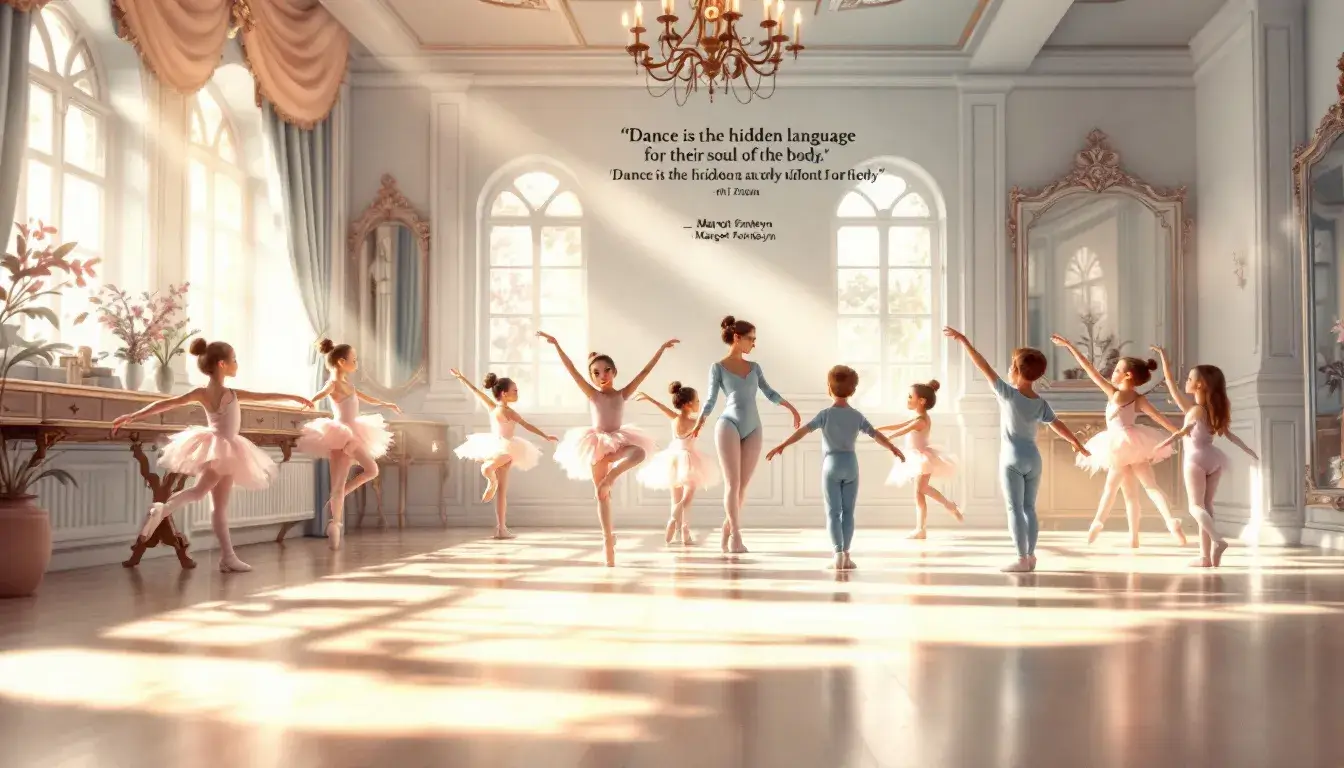
After understanding your child’s needs, research dance schools. Collect recommendations from other parents or dancers to find reputable local schools. Check the schools’ reputations by examining students’ performances and comparing them with previous experiences. This will give you an idea of the school’s quality and the success of its students.
Consider important factors such as convenience and the availability of dance styles that align with your child’s interests. Evaluating the teachers’ specializations is also crucial, ensuring your child receives the best possible instruction.
Additionally, being an RAD teacher does not necessarily guarantee effective teaching, so it is important to assess their teaching methods. Researching online can provide valuable information about the school’s affiliation with reputable examining bodies and the overall quality of education.
Ultimately, the goal is to find a dance school that meets your logistical needs and offers a high standard of dance education. This will set a strong foundation for your child’s growth as a dancer and help them achieve their goals.
Look for Qualified Instructors
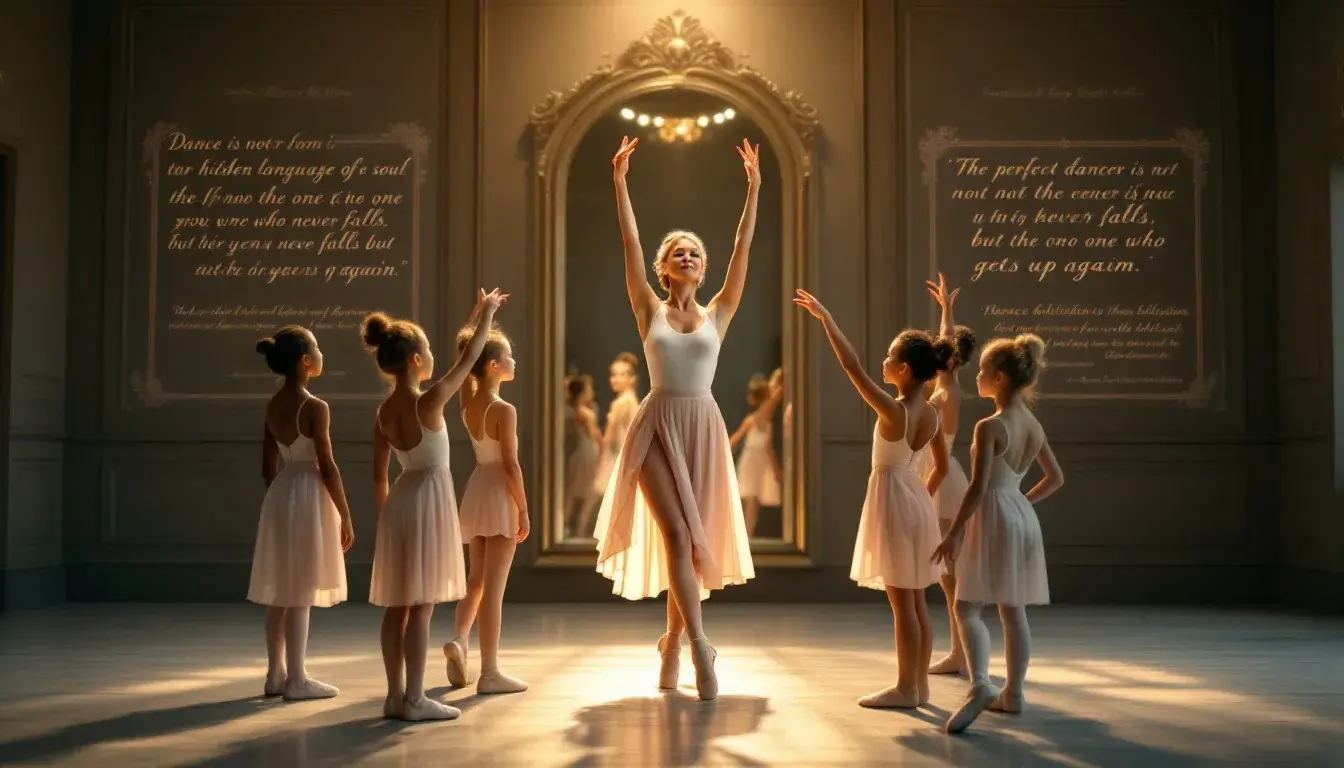
Finding a qualified dance teacher is critical for your child’s development. Proper certifications, such as those from the Royal Academy of Dance (RAD exams), ensure that the teacher meets professional standards and provides a high standard of dance education. However, no one teacher can embody all the necessary qualities.
It is important to evaluate teachers based on their teaching methods, classroom dynamics, and overall compatibility with students rather than just their qualifications or affiliations. The RAD offers recognized certifications that guarantee a teacher’s ability to teach dance effectively.
In addition to certifications, ballet teachers should have substantial dance experience and participate in ongoing professional development. This ensures that they remain effective and up-to-date with the latest teaching methods. Reputable ballet schools often require these supplemental certifications, making them a key factor in your decision-making process.
Observe a Class
Observing a dance class is a crucial step in evaluating a potential teacher. It allows you to see their teaching methods and understand how they interact with students. Watching a class can also slow down the learning process, making it easier to grasp the techniques and strategies employed by the teacher.
Observing a class provides insight into its structure and how the teacher engages with students. Some teachers, for example, may use innovative methods, such as selecting a disengaged student as a ‘ballet doll’ for demonstrations, to illustrate their teaching techniques. This helps the student gain confidence and provides a glimpse into the teacher’s ability to manage the class effectively.
Evaluate Teaching Style
Dance teachers’ Teaching styles vary significantly, from authoritative to student-led approaches. Finding a style that matches your child’s learning preferences is important. Students benefit from learning through various modalities, including visual, auditory, and kinesthetic methods. This multi-faceted approach can enhance their understanding and retention of dance techniques.
Another critical aspect of the teaching style is feedback. Not all students respond positively to corrective feedback; some may interpret it as a personal attack rather than an opportunity for improvement.
Mood check systems can help teachers gauge students’ readiness to receive input, allowing for more tailored instructional approaches. Encouraging students to express how they prefer to receive feedback can lead to a more effective and personalized learning experience.
Clear instructions are essential for helping students learn complex steps more easily and improving their mental understanding of dance. Participating in a trial class can also help you assess if the teaching style suits your child’s learning preferences.
Consider Class Size
Class size is, of course, another important factor to consider. Smaller class sizes allow for more individualized attention from teachers, which is crucial for the effective development of young ballerinas. This individualized attention can significantly enhance learning and technique, making it easier for students to grasp complex dance movements.
Smaller class sizes foster a supportive learning environment essential for ballerinas’ growth. This environment helps them develop their skills and ensures they receive support and encouragement from their teachers.
Check Teacher’s Experience
Understanding a teacher’s professional dancing background helps assess their expertise and credibility in training young ballerinas. Years of teaching experience correlate with teachers’ ability to manage classes effectively and adapt methods. Both professional knowledge and years of teaching contribute significantly to the effectiveness and quality of instruction provided to students.
When choosing a dance teacher, it’s important to consider both their professional and teaching experience. This combination ensures that your child receives high-quality instruction to help them grow as a person and a dancer.
Speak to Other Parents
Talking to other parents can provide valuable insights into their experiences with different dance teachers and schools. Recommendations from other parents can be a useful source for finding a good dance or music teacher. It’s common for parents to move around before finding the right dance teacher that fits their child’s needs.
Other parents may also provide insights into the quality of the school’s remaining music and dance teachers. These conversations can help you make a more informed decision and choose a great teacher who will fit your child well.
Assess the Learning Environment
A dance class should provide a safe, creative, and nurturing environment to foster students’ growth. The dance and studio owners should prioritize safety by having a properly constructed dance floor. The overall atmosphere of the dance studio should be welcoming and well-maintained to ensure a positive experience.
A supportive environment can help children process disappointment in dance and prevent their self-esteem from diminishing. Parents should manage their reactions to disappointments in dance to influence their child’s perspective positively. Effective communication from coaches fosters a supportive learning atmosphere for young dancers.
Importance of Technique and Progression

Proper dance technique is crucial for developing a dancer’s body and preventing injuries. Strength and control in dance are built through foundational ballet techniques. Correct terminology enhances students’ ability to articulate dance, body movements, and concepts.
Clear goals and expectations are crucial for effective dance instruction. Dance teachers are often expected to demonstrate their knowledge and ability to create and execute successful lesson plans tailored to students’ skill levels. Encouraging practice at home and setting achievable goals can enhance a child’s progress in dance.
Feedback is essential for improving dance skills; it should be constructive and meaningful. Class placement should be based on the student’s experience and ability to foster growth. Teachers should encourage students to express their unique dancing style while ensuring they understand fundamental techniques.
Balance Between Discipline and Fun

A successful dance class should balance challenge and enjoyment to maintain student motivation. Dance coaches must balance enforcing rules with ensuring that students still enjoy dancing. Implementing peer feedback in classes can foster better student communication skills and may make them more receptive to criticism.
In smaller classes, dancers are more likely to stay engaged and enjoy learning, which is essential for their overall development. Discipline in dance includes learning techniques, routines, and the importance of consistent practice.
A nurturing atmosphere in dance classes fosters emotional well-being, self-expression, and confidence among students. Supportive instructors are crucial in creating this positive environment. Children’s dance classes should also promote teamwork, encouraging kids to collaborate and support each other.
Flexible Scheduling
Flexible scheduling is essential for accommodating families’ busy lives. Dance studios can utilize online booking systems that allow students to view real-time availability and book classes conveniently. This flexibility allows students to reschedule or cancel courses, enhancing student satisfaction and attendance.
Offering a variety of class types, including make-up and drop-in classes, can accommodate diverse student schedules. Private lessons can also be scheduled flexibly to fit each student’s needs, making dance education more accessible.
Costs and Value
Consider the tuition fees and additional costs of your child’s dance education to ensure it aligns with your financial situation. Smaller class sizes allow for more personalized attention, which can enhance the value of the education provided.
Taking trial classes can help assess how well your child responds to a good teacher and the whole class atmosphere, contributing to the value of education for young students.
Compare tuition fees and additional costs against the value of the education to ensure it fits within your budget.
Trial Classes
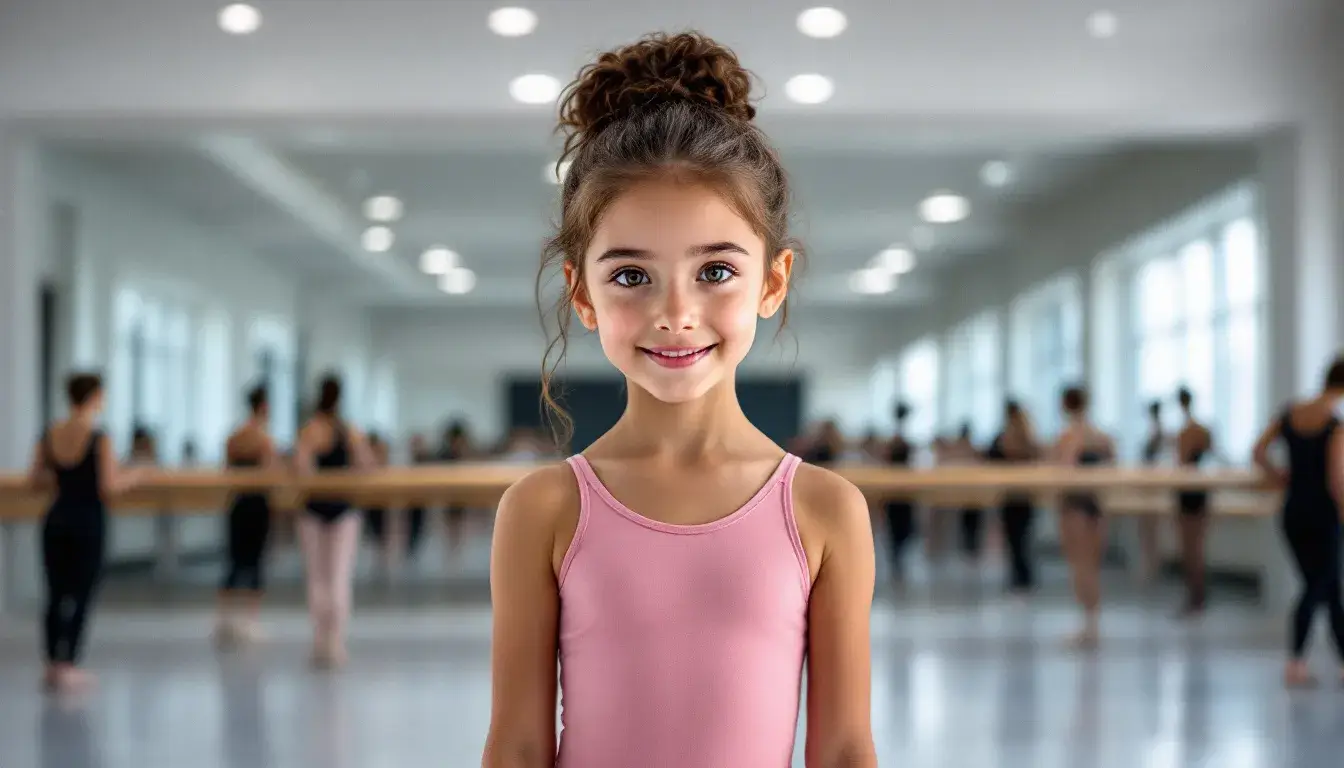
Trial classes are crucial for parents to assess how well a dance teacher fits their child before committing long-term. These classes allow parents to observe how their child interacts with the teacher and peers in a dance setting. This interaction can provide valuable insights into whether the teacher’s style and class atmosphere fit your child well.
It is essential to evaluate the overall atmosphere of the dance class before committing. Trial classes provide an opportunity to ensure the environment is conducive to your child’s learning and enjoyment.
Communication Skills
Effective communication skills are vital for a dance teacher. Regularly engaging with parents can help alleviate anxiety and improve communication about their children’s experiences. Clear teaching skills and communication protocols between staff and parents can prevent misunderstandings and ensure consistent messaging.
A dance teacher should provide regular feedback and assessment regarding a child’s performance. This feedback helps parents stay informed about their child’s progress and areas needing improvement. Clear and open communication fosters a positive relationship between teachers, parents, and students.
Performance Opportunities
Performance opportunities are an essential part of a dance student’s education. As a parent, choosing a dance teacher who regularly allows students to perform in front of an audience is important. These experiences are invaluable for building confidence, stage presence, and overall performance skills.
Look for dance schools that organize annual recitals, participate in local dance competitions and community shows, or even create their dance productions. Some schools may invite guest choreographers or dancers to work with students, offering new and exciting performance experiences. These opportunities enhance your child’s skills and expose them to different styles and techniques.
When evaluating performance opportunities, consider the dancer’s and your child’s age and skill level. Younger students may benefit from simple recitals or showcases, while older or more advanced students might be ready for complex productions or competitive events. Ensure that the dance teacher provides adequate rehearsal time and helps students develop their stage presence, teaching them how to handle nerves and pressure.
By choosing a dance teacher who prioritizes performance opportunities over lessons, you can help your child grow into a confident and skilled performer, well-prepared for a potential career in dance.
Student Safety and Well-being
Ensuring the safety and well-being of students is paramount in dance education. A good dance teacher will prioritize creating a safe and supportive learning environment, providing proper training and supervision, and being vigilant about potential health risks.
A safe learning environment starts with the studio itself. It should be well-ventilated, well-lit, and free from hazards. The dance floor should be properly constructed to prevent injuries; a first aid kit should always be on hand. Knowing how to respond in case of an emergency is also crucial.
Proper training and supervision are key components of student safety. A qualified dance teacher will correctly demonstrate techniques, provide clear instructions, and be aware of potential risks or injuries. They should also be attentive to each student’s needs, ensuring everyone progresses safely.
It is also important to be aware of the health risks associated with dance, such as overuse injuries or eating disorders. A responsible dance teacher will strive to promote healthy habits and support students struggling with these issues. This includes encouraging proper nutrition, adequate rest, and a balanced approach to training.
By prioritizing student safety and well-being, a dance teacher creates a positive and nurturing environment where students can thrive and reach their full potential.
Continuing Professional Development
For a dance teacher, staying up-to-date with the latest techniques, trends, and research in dance education is essential. Continuing professional development ensures teachers remain effective, passionate, and inspired, ultimately benefiting their students.
Look for jobs for dance teachers who regularly attend workshops, conferences, and training programs. These opportunities allow them to learn new teaching methods, improve their skills, and stay current with industry developments. Reading industry publications and networking with other dance professionals are valuable ways to stay informed and motivated.
Consider their teaching goals and objectives when evaluating a dance teacher’s commitment to professional development. Teachers who seek out programs that align with their interests and needs are more likely to bring practical and innovative ideas into the classroom. This continuous learning process helps them provide their students with the best possible dance education.
Reflecting on their teaching practice and seeking feedback from students, peers, and mentors is another important aspect of professional development. A great teacher is always open to new ideas and approaches, constantly striving to improve their teaching skills.
By choosing a dance teacher who prioritizes continuing professional development, you can be confident that no matter what, your child will receive high-quality instruction from a motivated and knowledgeable professional.
Resume
Choosing the right ballet teacher for your child involves understanding their needs, researching dance schools, and evaluating teachers’ qualifications and experience. Observing classes, assessing teaching styles, and considering class sizes is also crucial. Speaking to other parents and ensuring a nurturing learning environment can further guide your decision.
By following these essential tips, you can find a teacher to provide your child with a balanced and enjoyable dance education. Remember, the right teacher can make all the difference in the world in fostering your child’s passion for dance and helping them achieve their goals.
FAQ
What are the key differences between major ballet teaching methods like Vaganova, Cecchetti, and Balanchine?
Each method emphasizes distinct aspects of ballet training. The Vaganova method focuses on strength, flexibility, and expressiveness, integrating elements of French, Italian, and Russian techniques. The Cecchetti method prioritizes a systematic approach to movement and balance, emphasizing precision and clean lines. The Balanchine technique is known for its speed, musicality, and extended lines, often incorporating unconventional arm and hand placements.
How can I assess a ballet teacher’s ability to provide individualized attention?
Observe whether the teacher adapts their instruction to cater to each student’s strengths and improvement areas. A competent teacher will offer personalized corrections and guidance, ensuring that dancers progress at their own pace and receive the support they need to develop their skills.
What role does a teacher’s professional background play in their teaching effectiveness?
Teachers’ professional experience can inform their understanding of performance standards and industry expectations. However, effective teaching also requires communicating concepts, inspiring students, and fostering a positive learning environment. Therefore, both professional experience and teaching skills are important factors to consider.
How important is it for a ballet teacher to continue their education?
Ongoing professional development ensures teachers stay current with evolving techniques, pedagogical strategies, and safety protocols. Teachers who engage in continuous learning are better equipped to provide high-quality instruction and adapt to the needs of their students.
What should I look for in a ballet teacher’s approach to injury prevention?
An attentive teacher will incorporate proper warm-ups, emphasize correct technique, and educate students on body awareness to minimize the risk of injury. They should also be knowledgeable about recognizing early signs of strain and advising on appropriate rest and recovery strategies.
How can I determine if a ballet teacher fosters a positive and inclusive classroom environment?
Look for signs that the teacher encourages mutual respect among students, celebrates diversity, and addresses each student with kindness and fairness. An inclusive environment is where all dancers feel valued and supported in their learning journey.
What indicators suggest that a ballet teacher effectively develops students’ self-confidence?
Effective teachers provide constructive feedback, celebrate progress, and set achievable goals, all building a student’s self-esteem. They create a safe space for students to take risks and learn from mistakes without fear of harsh criticism.
How can I evaluate a ballet teacher’s communication skills?
Observe whether the teacher explains concepts clearly, listens actively to students’ questions and concerns, and provides feedback in an understandable and supportive manner. Good communication fosters a productive and engaging learning environment.
What is the significance of a teacher’s ability to inspire and motivate students?
An inspiring teacher ignites passion and enthusiasm for ballet, encouraging students to strive for excellence. Motivation can lead to increased dedication, perseverance, and a deeper appreciation for the art form.
How does a teacher’s approach to discipline impact student learning?
A balanced approach to discipline maintains a structured and respectful classroom while allowing for creativity and expression. Consistent and fair discipline helps students understand expectations and fosters a focused learning atmosphere.
What role does a teacher play in preparing students for performances?
Teachers guide students through rehearsal, teach stage etiquette, and help develop performance skills such as expression and presence. They ensure that students are technically and emotionally prepared to perform confidently.
How can I assess whether a teacher’s class structure is effective?
An effective class structure includes a logical progression of exercises, appropriate pacing, and a balance between repetition and introducing new material. This structure supports skill development and keeps students engaged.
What should I consider regarding a teacher’s feedback style?
Constructive feedback should be specific, actionable, and delivered in a supportive tone. A teacher’s feedback style should encourage improvement while maintaining the student’s confidence and motivation.
How important is it for a teacher to set clear expectations and goals?
Clear expectations and goals provide students with direction and purpose in their training. They help students understand what is required for progression and allow for measurable achievements along their learning path.
What is the impact of a teacher’s enthusiasm on student engagement?
A teacher’s genuine enthusiasm for ballet can be contagious, increasing student interest and participation. Enthusiastic teachers often create a dynamic and energetic classroom atmosphere that enhances learning.
How can I determine if a teacher is adaptable to different learning styles?
Adaptable teachers employ various instructional methods to accommodate diverse learning preferences, such as visual demonstrations, verbal explanations, and hands-on corrections. This flexibility ensures that all students can grasp concepts effectively.
What role does a teacher play in developing a student’s musicality?
Teachers help students understand and interpret music, emphasizing timing, rhythm, and expression. Developing musicality enhances dancers’ ability to connect movement with music, resulting in more expressive performances.
How does a teacher’s organization and preparedness affect class quality?
A well-prepared teacher plans lessons, ensuring a coherent flow of activities that build upon each other. The organization minimizes downtime, maximizes instructional time, and contributes to a productive learning environment.
What should I look for in a teacher’s ability to foster student teamwork and camaraderie?
Teachers who encourage collaboration, mutual support, and respect among students help build a sense of community. This camaraderie enhances the class experience and promotes a positive and inclusive atmosphere.
How can a teacher’s mentorship influence a student’s long-term development?
Beyond technical instruction, a teacher who serves as a mentor provides guidance, encouragement, and support throughout a student’s dance journey. This mentorship can have a lasting impact on a student’s personal and professional growth.

